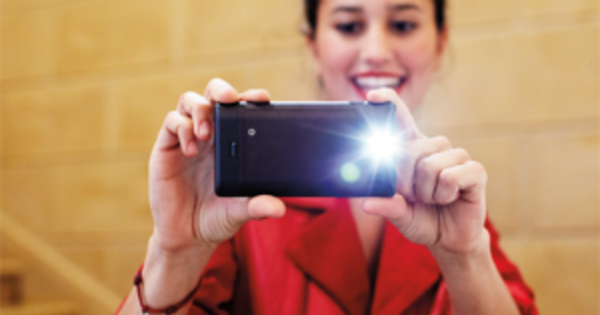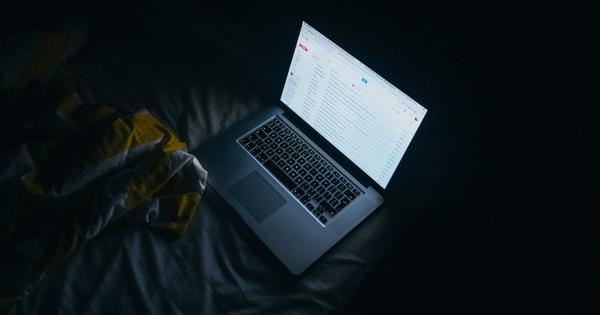Smartphones, and increasingly tablets, have very good cameras. By default, everything is automatically arranged for you and that is nice and easy. But if you want to take really good photos and movies, it's better to take matters into your own hands to lend the camera a hand. These 18 tips make shooting with your smartphone a breeze.
Tip 01: Firm grip
You may not think about it, but you make visibly better photos and videos by holding your smartphone firmly. If you pay attention, you see that people often operate their phones rather casually. For example, they hold the device loosely with one hand and record a movie or shoot a photo 'en passant'. There is a very good chance that photos will not be completely sharp and videos will be jerky, because the device moves a bit during the recording. Therefore, preferably hold your smartphone with both hands as soon as you take pictures, just like with a normal camera. Then the device moves or vibrates minimally. In addition, exert as little pressure as possible on the screen to print, otherwise you will push the device away from you exactly at the critical moment. A cursory touch is more than enough, after all, it is not a physical button. Even in less light, you immediately get better photos and movies, because then the camera is ultra-sensitive to even the slightest movement.

Tip 02: Print Button
To take a photo or film, you usually use the virtual print button that you see on the screen, but it can also be done differently. With almost every smartphone and tablet, you can also use the volume button on the side of the device for this. Because (unlike a regular camera) it doesn't really matter in which position you hold the phone or tablet (upright, horizontal or upside down), you can also choose which method you find useful and when. If you hold the device upright firmly with both hands (to keep the camera as still as possible in low light), you can often press the volume button on the side with your thumb. In landscape position, one of your index fingers is sometimes close to the button, but it also happens that the virtual button on the screen is more convenient. In short, choose the most practical print button for each situation.

Tip 03: Quickly ready
You turn on a regular camera and it is immediately ready to take pictures. With a smartphone or tablet, you can photograph and film via an app. So you first have to unlock the smartphone and then find and start the app. If you quickly take a picture of something, those extra actions can be annoying. Fortunately, it can be faster and easier, because you can start the camera directly from the lock screen. On an iPhone, from iOS version 10, swipe left on the lock screen so that the camera slides into the frame from the right. With other tablets and smartphones, you usually drag a camera icon. On some devices, you can also activate the camera with the push of a physical button.
You can start the camera directly from the lock screen for even faster shootingTip 04: Technically good
When taking a photo, there are roughly two things to keep in mind from a technical point of view. The photo must be sharp and the exposure must be correct. The great thing is that your smartphone takes care of all this for you automatically. Or at least, try to do that as best you can. It is and remains a device, so it remains important that you keep an eye on whether everything is going according to your wishes. Where necessary, you can intervene to correct the automatic system. This is simply necessary for regular cameras, as well as smartphones and tablets.

Tip 05: Focus
Let's start focusing. As soon as you point your phone or tablet at something, the camera will focus very quickly. Older models needed quite some time for this, but especially recent devices are very fast with this. It can still go wrong, though. For example, does a tree in the distance become sharp, instead of a person in the foreground? This especially occurs if you take a person or object a little more to the side instead of exactly in the middle. The camera sometimes gets confused. Then tap the person on the screen to still point to the main subject. The camera now focuses again and this time in the right place.

Tip 06: Lighting
Simultaneously with the focus, the exposure is also determined by the camera. Both when you leave it to the camera, and when you point to a point on the screen yourself. Especially if the foreground is significantly lighter or darker than the background, the image will sometimes become overexposed or underexposed. You can then tap elsewhere on the screen to correct this, but the focus will also change. So don't tap a distant mountain range when taking a portrait photo. It is better and easier to use exposure compensation. This allows you to make a photo or film lighter or darker according to your taste, without having to adjust the focus. You often have to tap on the subject first, after which you adjust the brightness via a slider. On Android devices, it may also be an option in the camera menu.
 At the same time as focusing, exposure is also determined by the camera
At the same time as focusing, exposure is also determined by the camera Tip 07: Secure
In certain situations, it may be useful to lock the focus and exposure. For example, if you want to take several photos of the same subject in succession, or if you are already ready because something will come into the picture that you want to capture. You don't want to have to tap the screen every time to get the right focus and well exposed. Then it is handy that you can lock the focus and exposure. Usually you do this by briefly pressing a finger on the screen until a lock message appears. From that moment on you can take pictures and movies without any worries. The focus and exposure remain exactly the same all the time, even if you point the camera at something else. So remove the lock as soon as the light or the distance to the subject changes, because otherwise your photos and movies will fail. You do that by tapping anywhere on the screen.

Tip 08: Continuous mode
Sometimes an event plays out really, really fast. If you take one photo, you may not catch the most beautiful moment, or you may even miss it completely. Think of shooting sports, fast cars, running animals and children ... all situations where you have little reaction time. With many smartphone and tablet cameras, the camera switches to the so-called burst or continuous mode when you hold down the shutter button. The device then continues to take pictures in quick succession until you release the button again. That way you have a much higher chance of hitting. Afterwards you only have to search the photo series for the best photos. The rest can go right away. On some devices, you must first enable the feature in the settings.


